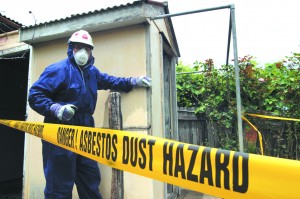Asbestos is a naturally occurring mineral made up of microscopic fibres that was first used in product manufacturing in the 1920s. Between the mid-1940s until the mid-1980s asbestos was commonly used in the manufacture of thousands of products including building materials.
Although a complete ban on all asbestos-containing materials came into force on 31 December 2003, Australia’s asbestos legacy will continue to cause asbestos-related diseases if fibres are inhaled when asbestos is not managed safely.
When asbestos is disturbed in its natural form (in rural landscapes) or in asbestos-containing products, fibres can be released and become airborne. If inhaled the fibres can cause asbestos-related diseases that can be life-threatening.
Why Can Asbestos Dust or Fibres be Dangerous to Your Health?
- You must observe safety precautions when removing or working with asbestos, otherwise you risk exposing yourself and your family to long-term health risks
- There is no safe level of exposure to asbestos fibres!
- If asbestos is disturbed it can release dangerous fine particles of dust containing asbestos fibres
- Breathing in dust containing asbestos fibres can cause asbestosis, lung cancer and mesothelioma
- Mesothelioma is a cancer which most often occurs in the lining of the lung. There is no cure
- It is anticipated that incidences of malignant mesothelioma (an incurable cancer) will continue to increase in Australia as a result of Australia’s wide-spread use of asbestos-containing materials
- The risk of contracting asbestos related diseases increases with the number of fibres inhaled and the length of time that you inhaled asbestos fibres (number of years exposed)
- The risk of lung cancer from inhaling asbestos fibres is greatly increased if you smoke
- Symptoms of asbestos dust related diseases do not usually appear until about 20 to 30 years after the first exposure to asbestos
- The average time between exposure and developing mesothelioma is about 45 years
Share this information on:


